- Probability Density Function in Statistics Tutorial | Definition, Formula & Examples
- Best Clojure Tutorial | Ultimate Guide to Learn [UPDATED]
- Introduction to RapidMiner Tutorial | Get Started with RapidMiner
- R Tutorial
- Spark SQL Tutorial
- Data Extraction in R Tutorial
- Introduction to RapidMiner Tutorial | Get Started with RapidMiner
- Data Scientist vs Data Analyst vs Data Engineer Tutorial
- Unsupervised Learning with Clustering- Machine Learning Tutorial
- Data Scientist Report 2020 Tutorial
- Tutorial on Statistics and Probability for Data Science | All you need to know [ OverView ]
- Machine Learning-K-Means Clustering Algorithm Tutorial
- Julia Tutorial
- Data Science Tutorial
- Probability Density Function in Statistics Tutorial | Definition, Formula & Examples
- Best Clojure Tutorial | Ultimate Guide to Learn [UPDATED]
- Introduction to RapidMiner Tutorial | Get Started with RapidMiner
- R Tutorial
- Spark SQL Tutorial
- Data Extraction in R Tutorial
- Introduction to RapidMiner Tutorial | Get Started with RapidMiner
- Data Scientist vs Data Analyst vs Data Engineer Tutorial
- Unsupervised Learning with Clustering- Machine Learning Tutorial
- Data Scientist Report 2020 Tutorial
- Tutorial on Statistics and Probability for Data Science | All you need to know [ OverView ]
- Machine Learning-K-Means Clustering Algorithm Tutorial
- Julia Tutorial
- Data Science Tutorial
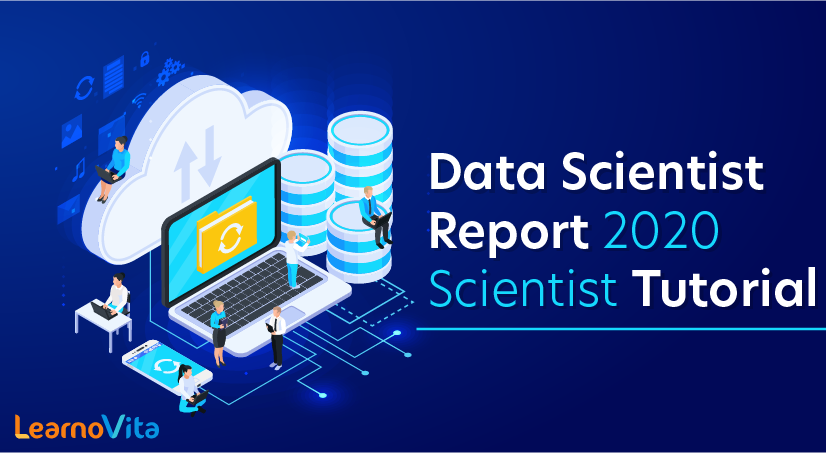
Data Scientist Report 2020 Tutorial
Last updated on 29th Sep 2020, Blog, Data Science, Tutorials
What is a Data Scientist?
Data scientists are big data wranglers, gathering and analyzing large sets of structured and unstructured data. A data scientist’s role combines computer science, statistics, and mathematics. They analyze, process, and model data then interpret the results to create actionable plans for companies and other organizations.
Data scientists are analytical experts who utilize their skills in both technology and social science to find trends and manage data. They use industry knowledge, contextual understanding, skepticism of existing assumptions – to uncover solutions to business challenges.
A data scientist’s work typically involves making sense of messy, unstructured data, from sources such as smart devices, social media feeds, and emails that don’t neatly fit into a database.
Steps to Become a Data Scientist
Here are six steps to consider if you’re interested in pursuing a career in data science:
- 1. Pursue an undergraduate degree in data science or a closely related field
- 2. Learn required skills to become a data scientist
- 3.Consider a specialization
- 4. Get your first entry-level data scientist job
- 5. Review additional data scientist certifications and post-graduate learning
- 6. Earn a master’s degree in data science
Subscribe For Free Demo
Error: Contact form not found.
How to Become a Data Scientist in 2020
1. Pursue an undergraduate degree in data science or a closely related field
You will need at least a bachelor’s degree in data science, mathematics, statistics, computer science to get your foot in the door as an entry level data scientist. Degrees also add structure, internships, networking and recognized academic qualifications for your résumé. However, if you’ve received a bachelor’s degree in a different field, you may need to focus on developing skills needed for the job through online short courses or bootcamps.
2. Learn the required skills to become a data scientist
- Programming
- Machine Learning techniques
- Data Visualization and Reporting
- Risk Analysis
- Statistical analysis and Math
- Effective Communication
- Software Engineering Skills
- Data Mining, Cleaning and Munging
- Research
- Big Data Platforms
- Cloud Tools
- Data warehousing and structures
This list is always subject to change. As Anmol Rajpurohit suggests in his guide to becoming a data scientist, “generic programming skills are a lot more important than being the expert of any particular programming language.
3. Consider a specialization
In demand data scientists typically specialize in a particular industry or develop strong skills in areas such as artificial intelligence, machine learning, research, or database management. Specialization is a good way to increase your earning potential and do work that is meaningful to you. According to the Burtchworks Study, entry data scientists working in the tech industry earn an average salary of $85,143 and senior data scientists working for consulting firms earn an average salary of $158,462.
Get your first entry level job as a data scientist
Once you’ve acquired the right skills and/or specialization, you should be ready for your first data science role! It may be useful to create an online portfolio to display a few projects and showcase your accomplishments to potential employers. You also may want to consider a company where there’s room for growth since your first data science job may not have the title data scientist, but could be more of an analytical role. You’ll quickly learn how to work on a team and best practices that will prepare you for more senior positions.
Here are a few certifications that focus on useful skills:
Certified Analytics Professional (CAP)
CAP was created by the Institute for Operations Research and the Management Sciences (INFORMS) and is targeted towards data scientists. During the certification exam, candidates must demonstrate their expertise of the end-to-end analytics process. This includes the framing of business and analytics problems, data and methodology, model building, deployment and life cycle management.
Earn a master’s degree in data science
Academic qualifications may be more important than you imagine. When it comes to most data science jobs, is a master’s required? It depends on the job and some working data scientists have a bachelor’s or have graduated from a data science bootcamp. However, as Burtchworks notes, data scientists typically have a graduate or advanced degree in a quantitative discipline. The Burtch Works study also shares that most data scientists have an advanced degree, either a master’s or Ph.D.
Data Scientist Responsibilities
“A data scientist is someone who is better at statistics than any software engineer and better at software engineering than any statistician”. – Josh Wills on the difference between data scientists and statisticians
On any given day, a data scientist’s responsibilities may include:
- Solving business problems through undirected research and framing open-ended industry questions
- Extract huge volumes of structured and unstructured data. They query structured data from relational databases using programming languages such as SQL. They gather unstructured data through web scraping, APIs, and surveys.
- Employ sophisticated analytical methods, machine learning and statistical methods to prepare data for use in predictive and prescriptive modeling
- Thoroughly clean data to discard irrelevant information and prepare the data for preprocessing and modeling
- Perform exploratory data analysis (EDA) to determine how to handle missing data and to look for trends and/or opportunities
- Discovering new algorithms to solve problems and build programs to automate repetitive work
- Communicate predictions and findings to management and IT departments through effective data visualizations and reports
- Recommend cost-effective changes to existing procedures and strategies
Every company will have a different take on data science job tasks. Some treat their data scientists as data analysts or combine their duties with data engineers; others need top-level analytics experts skilled in intense machine learning and data visualizations.
As data scientists achieve new levels of experience or change jobs, their responsibilities invariably change. For example, a person working alone in a mid-size company may spend a good portion of the day in data cleaning and munging. A high-level employee in a business that offers data-based services may be asked to structure big data projects or create new products.
Characteristics of a Successful Data Scientist Professional
Data scientists don’t need to just understand programming languages, management of databases and how to transpose data into visualizations – they should be naturally curious about their surrounding world, but through an analytical lens. Possessing personality traits that resemble quality assurance departments, data scientists may be meticulous as they review large amounts of data and seek out patterns and answers. They are also creative in making new algorithms to crawl data or devising organized database warehouses.
Generally, professionals in the data science field must know how to communicate in several different modes, i.e to their team, stakeholders and clients. There may be a lot of dead ends, wrong turns, or bumpy roads, but data scientists should possess drive and grit to stay afloat with patience in their research.
Six steps to become a Data Scientist
Step 1:Preparation
Future data scientists can begin preparations before they even step foot on a university campus or launch themselves into an online degree program. Becoming proficient with the most widely used programming languages in data science such as Python, Java, and R — and refreshing their knowledge in applied math and statistics — will help aspiring data scientists get a head start. In fact, entering college with an already established skillset frequently improves a student’s learning rate. But, also, early exposure to data science knowledge requirements is helpful for determining whether a data science career is the right fit.
Step 2: Complete undergraduate studies
The most sought-after majors for data science are statistics, computer science, information technologies, mathematics, or data science (if available). Minoring in one of the aforementioned fields is also recommended. Continue to learn programming languages, database architecture, and add SQL/MySQL to the “data science to-do list.” Now is the time to start building professional networks by looking for connections within college communities, look for internship opportunities, and ask professors and advisors for guidance.
Step 3: Obtain an entry-level job
Companies are often eager to fill entry-level data science jobs. Search for positions such as Junior Data Analyst or Junior Data Scientist. System-specific training or certifications in data-related fields (e.g., business intelligence applications, relational database management systems, data visualization software, etc.) might help when looking for entry-level data science jobs.
Step 4: Earn a Master’s Degree or a Ph.D.
Data science is a field where career opportunities tend to be higher for those with advanced degrees. The in-demand graduate degrees for data science include the exact same specifications for an undergraduate degree: data science (if available), computer science, information technology, math, and statistics. However, many companies also accept STEM degrees such as biotechnology, engineering, and physics (among others). Also keep in mind that data scientists need to understand how to use enterprise-grade data management programs and how distributed storage and computation operate (e.g., Hadoop, MapReduce, and Spark) in relation to model building and predictive analytics.
Step 5:Get promoted
Additional education and experience are key factors that lead to being promoted or becoming a data scientist in high demand. Businesses value results. Coupling strong technical skills with project management and leadership experience will generally chart a course towards more significant opportunities and higher compensation.
Step 6: Never Stop Learning
Staying relevant is crucial to the ever-evolving field of data science. In this age of constant technological innovation, continuing education is a hedge against shifts in the career market. This is also the case for data science since the field isn’t as established as other statistically and technologically focused careers. A career-oriented data scientist is always learning and evolving with the industry. Continue to network and look for educational and professional development opportunities through boot camps and conferences.
Data Scientist Salary Report 2020
The role of Data Scientists has dramatically evolved over the last five years from mere data miners to complex problem solvers. From entertainment companies like Netflix to retail brands like Walmart – all have business models that now heavily rely on data intelligence.
Data Scientists collect, analyze, and interpret large volumes of data, in many cases, to improve a company’s operations. They develop statistical models that analyze data and detect patterns, trends, and relationships in data sets. This information is vital to predict consumer behavior or to identify business and operational risks.
DATA SCIENTIST SALARY – IS DATA SCIENTIST A HIGH PAYING JOB?
For the year 2020, Glassdoor named Data Scientist as the third most desired job in the United States with more than 6500 openings and a median base data scientist salary of $107,801with a job satisfaction rate of 4.0.
When Glassdoor had named Data Scientist as the best job in the U.S, we published a scenario of Data Scientists’ jobs and salaries in Europe based on a report by Big Cloud.
Amidst this high demand of Data Scientists across the globe, it is not only difficult to hire Data Scientists, but also challenging to retain them. Undoubtedly, salary is one of the major components when Data Scientists look at jobs and decide what is going to be their next big gig. A lot of experienced data scientists are increasingly freelancing to increase their salary.
Data scientist salary trends we picked up from a recent report by Big Cloud titled European Salary Report. This report delves into insights from over 1300 responses and 33 questions asked to professionals of all backgrounds, ages, and locations within the European region — the largest share of contributions being from Germany, France, UK, Netherlands, and Switzerland.
DATA SCIENTISTS PREFER LEARNING NEW SKILLS ON THE JOB. RETAIN THEM!
Pay is a strong motivator although employees are willing to stay at their current company for longer – more so than before. This could be due to companies starting to understand the serious talent gap in the market and offering more competitive salaries to retain employees with new skills and increasing the overall average salary in the United States and Europe.
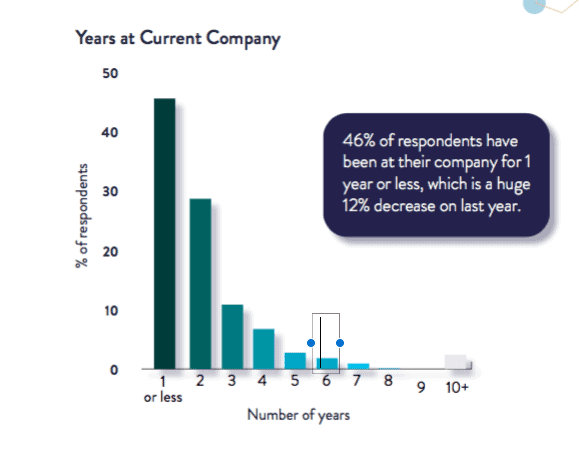
Comparing this to just 2% of employees staying with the same company for 10+ years, this data solidifies the ideology that Data Science is a fast-paced industry where Data Scientists and others in similar roles see value in learning new technologies and skills elsewhere. this comes as no surprise, as more companies recruit data scientist teams, salaries rise, and more specialist skills become sought after.
PYTHON: THE MOST POPULAR MODELLING CODING LANGUAGE FOR DATA SCIENTISTS
70% of respondents said they use Python as their primary modelling coding language. This is a 10% increase from last year. A key skill to command at least an average data scientist salary. However, to go above an average salary more coding languages may be needed.
Broadly 9% use R, 4% use SQL, and 4% use Java. There were also 3% of respondents that said they don’t code.
In addition, 66% of respondents said their primary production coding language is also Python. These charts only highlight the top five primary modelling and production coding languages from the respondents. There were also 2% of use cases for C++ in modelling and 2% in Matlab.
MOST POPULAR TOOLS AND METHODS USED BY DATA SCIENTISTS
As high as 90% of participants chose Python as a tool they use regularly across Europe, which highlights just how universally accepted this data science tool is. Another 65% chose Jupyter notebooks and 60% chose SQL. When it came to Data Science methods, logistic regression, neural networks, and random forests were the top three most popular choices with roughly 56% of respondents claiming to use them.
Compared to a Data Scientists tool preferences, there is a much greater variety amongst their chosen data science methods. Other options in the survey (that didn’t make it to the top seven shown above) were 34% ensemble, 31% Bayesian techniques and 28% SVMs.
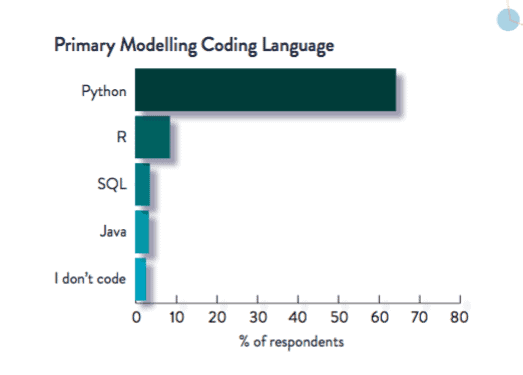
Does learning only python offer average pay?
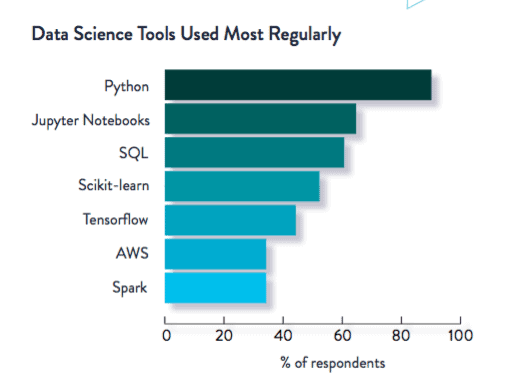
Salaries per year for job experience
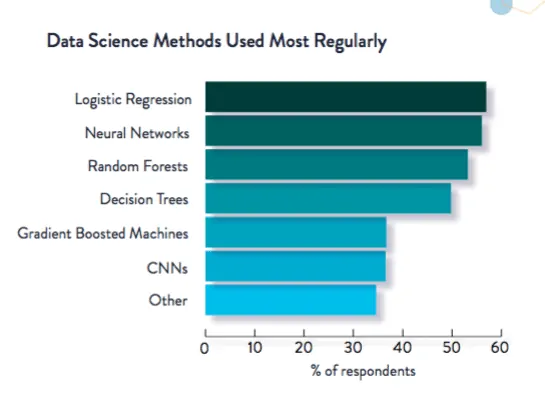
Methods and average pay
EXPECTED SALARY INCREASE BY EUROPEAN DATA SCIENTISTS
The Big Cloud survey asked its scientist respondents, ‘if you were moving jobs, what percentage salary increase do you think is realistic?’ A 23% majority expect to see an 11-15% increase in salary per year, with a further 19% expecting anywhere between 16-20%.
Upon comparing our 2019 results to the 2020 results, free food and equity/shares are more popular benefits now than they were than last year, with car/transport allowance and gym and leisure moving down the majority list instead.
If you are wondering where would a data scientist want to relocate for a new job? The top five places to relocate as a data scientist amongst European citizens were the United States, Germany, Switzerland, the UK, and France – the places with the highest data analytics salary on offer.
HOW MUCH CAN YOU MAKE AS A DATA SCIENTIST?
SWITZERLAND OFFERS THE HIGHEST SALARIES FOR DATA SCIENTISTS
Here is a look at salaries in different cities in Europe (including the UK for now)- Switzerland leading the way!






DATA SCIENCE SALARY IN THE UNITED STATES
If you are on either coast this makes a difference, according to indeed the average data science salary is $123,785 and according to glassdoor its $113,436.
Entry-level can range the widest from $50,000 to $90,000. this probably depends on your prior background and education in your career and of course, location.
Seeing that the data analytics industry is young, its not surprising to see professionals more active in moving employers often as anyone with experience becomes far more valuable to companies and can reach manager status quickly.
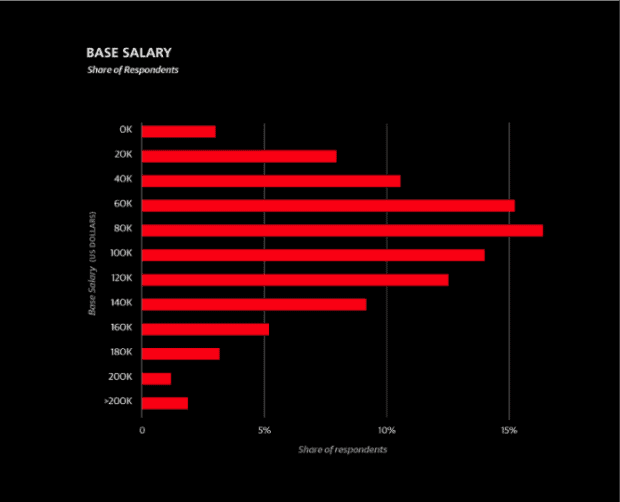
Data scientist salaries in United States.
DATA SCIENTISTS ARE MORE THAN WILLING TO WORK WITH STARTUPS
Across all industries in Europe, 68% of people do not currently work in start-ups. Despite this, the data science market remains open-minded, with 83% saying they would consider joining one in the future.
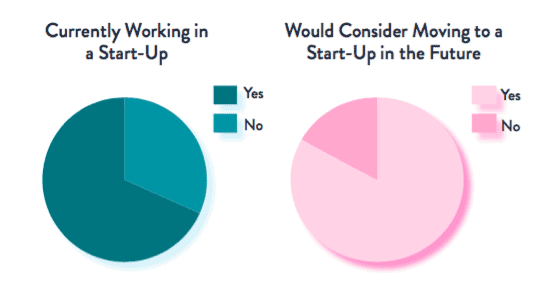
The respondents that currently work in start-up industries are primarily Technology/IT and Consulting (37%). Respondents from these two industries are also respectively the majority that would consider working for a start-up in the future (38%).
WHICH INDUSTRY DO DATA SCIENTISTS WORK IN?
Biggest industries for data jobs.
Consulting was the number one spot in the O’Reilly salary survey, followed by software and banking. No surprises there as these companies have the resources and huge amounts of data to go through. We fully expect data in insurance to be one of the biggest growth areas in 2021.
FINAL THOUGHTS ON A DATA SCIENTIST SALARY IN 2020
Python is the most used although to increase your salary data science skills should continually be enhanced, especially start-ups looking for more rounded skills with SQL and Spark, for example, will only add to boost a data scientists salary.
O’Reilly’s Data Science Survey found that learning D3, visualization library in javascript can boost a salary by $8,000 a year.
SQL, Excel, R and Python are the most commonly used tools although we would suggest learning another to make your resume really stand out.
Lastly, familiarity and experience with cloud computing will also boost salaries, with respondents who use Amazon Elastic Mapreduce getting a boost of about $6,000 in their salaries.
Big data in 2020 is still growing with lots of companies still to recruit we think scientist salaries will continue to rise, and the remote opportunities will also grow as companies compete for experience, skills and need to widen their job search to all geographies to recruit this in-demand skill set.
